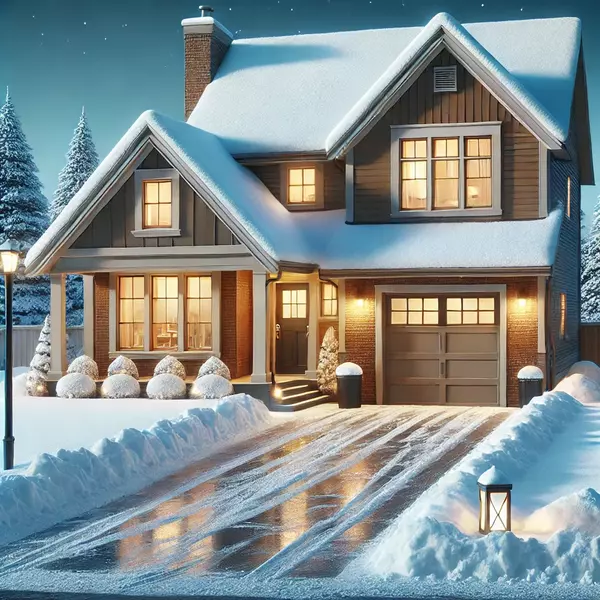
Comparative Market Analysis: Western Wisconsin vs. Eastern Twin Cities
Hello, buyers, sellers, and investors! Dustin Dodge here, your trusted real estate advisor in the Twin Cities Metro Area and Western Wisconsin. Today, we're diving into a comparative market analysis of these two vibrant regions. We'll cover price trends, inventory levels, and buyer demand to help you make informed decisions. Price Trends Western Wisconsin: Affordability: Homes in Western Wisconsin tend to be more affordable compared to the eastern Twin Cities. This affordability attracts first-time buyers and families looking for more space. Growth: While prices are rising steadily, they are still lower than in the metro areas, making it a great investment for those looking for value appreciation. Eastern Twin Cities: Higher Prices: The eastern Twin Cities, including areas like Woodbury and Stillwater, have higher home prices due to their proximity to Minneapolis and St. Paul. Market Fluctuations: Prices in these areas can be more volatile, influenced by economic factors and demand for suburban living close to urban centers. Inventory Levels Western Wisconsin: Balanced Market: Generally, Western Wisconsin experiences a balanced market with a good mix of available properties. Inventory levels can fluctuate seasonally but usually remain stable. New Developments: There is a growing trend of new housing developments, providing more options for buyers. Eastern Twin Cities: Low Inventory: The eastern Twin Cities often face low inventory levels, especially for single-family homes. This can lead to competitive bidding wars. High Demand: High demand means homes sell quickly, often above asking price, making it a seller's market. Buyer Demand Western Wisconsin: Family-Friendly: The area is highly attractive to families due to excellent schools, safe neighborhoods, and recreational opportunities. Remote Workers: With the rise of remote work, more professionals are moving to Western Wisconsin for a quieter lifestyle while maintaining their city jobs. Eastern Twin Cities: Urban Proximity: Buyers looking for a balance between suburban tranquility and urban amenities favor the eastern Twin Cities. Young Professionals: These areas attract young professionals who want to live close to their workplace while enjoying suburban benefits. Which Area is Right for You? First-Time Buyers: Western Wisconsin offers more affordable options and a family-friendly environment, making it ideal for first-time buyers. Investors: Both regions present great opportunities, but investors looking for higher appreciation might prefer the eastern Twin Cities due to higher demand and price growth. Families and Remote Workers: Western Wisconsin is perfect for those seeking space, affordability, and a strong community vibe. Young Professionals: The eastern Twin Cities provide easy access to urban centers, making it ideal for those who need to commute to Minneapolis or St. Paul. Conclusion Both Western Wisconsin and the Eastern Twin Cities have their unique advantages. Understanding these market dynamics can help you make the best decision whether you're buying, selling, or investing. Ready to explore your options? Let’s connect and make your real estate journey a success!

The Impact of Inflation on Home Prices: What Sellers Need to Know
Hello, sellers! Dustin Dodge here, your trusted real estate advisor in the Twin Cities Metro Area. With inflation on the rise, it's crucial to understand how it affects home prices and what strategies you can use to maximize your profits. Here’s what you need to know. 1. Understanding Inflation and Home Prices Inflation refers to the general increase in prices and the fall in the purchasing value of money. As inflation rises, the cost of goods and services, including homes, tends to increase. This can lead to higher home prices, but it also means that buyers have less purchasing power, which can impact demand. 2. The Effect on Mortgage Rates Inflation often leads to higher mortgage rates as lenders seek to protect their returns. Higher mortgage rates can reduce buyers' affordability, potentially leading to a slower market. As a seller, it’s important to be aware of this dynamic when pricing your home and negotiating offers. 3. Pricing Strategies in an Inflationary Market Stay Competitive: Research recent sales in your area and price your home competitively. Overpricing can deter buyers, especially when their purchasing power is diminished by higher mortgage rates. Highlight Value: Emphasize the unique features and upgrades of your home that justify the price. Energy-efficient upgrades and sustainable features can be particularly attractive to buyers looking to save on long-term costs. Be Flexible: Be open to negotiations and consider offering incentives, such as covering closing costs or offering a home warranty, to make your home more appealing. 4. Timing Your Sale In an inflationary market, timing can be crucial. If inflation is expected to rise further, selling sooner rather than later can help you avoid higher mortgage rates and reduced buyer demand. Work with your real estate agent to monitor market trends and choose the optimal time to list your home. 5. Marketing Your Home Effective marketing becomes even more important in an inflationary market. Utilize professional photography, virtual tours, and targeted online advertising to reach potential buyers. Highlight the benefits of your location, community amenities, and any recent renovations or upgrades. Conclusion Understanding the impact of inflation on home prices can help you make informed decisions and maximize your profits. By staying competitive, highlighting your home's value, and timing your sale strategically, you can navigate the challenges of an inflationary market. Need help selling your home in the Twin Cities? Contact me today for a no-obligation consultation. Let’s maximize your profit in this inflationary market!

Eco-Friendly Home Upgrades: Attracting Green Buyers
Hey there, eco-conscious sellers! Dustin Dodge here, your go-to real estate advisor in the Twin Cities Metro Area. If you're looking to sell your home and attract environmentally-conscious buyers, showcasing eco-friendly upgrades is a must. Here’s a guide to the latest sustainable home improvements and how to market these features effectively. 1. Energy-Efficient Windows and Insulation One of the most impactful upgrades you can make is installing energy-efficient windows and improving insulation. These features reduce energy consumption, lower utility bills, and increase overall comfort. When marketing your home, highlight these upgrades as key selling points. Provide energy-saving estimates and any certifications or ratings that prove their effectiveness. 2. Solar Panels Solar panels are becoming increasingly popular as a sustainable energy solution. They not only reduce the carbon footprint but also offer significant savings on electricity bills. If your home has solar panels, emphasize the long-term financial benefits and environmental impact. Mention any available tax credits or incentives that the new owner can take advantage of. 3. Smart Thermostats and Energy Management Systems Smart home technology, such as smart thermostats and energy management systems, appeal to tech-savvy and green buyers alike. These systems allow homeowners to monitor and control their energy usage more efficiently. Highlight the convenience, cost savings, and environmental benefits when marketing your home. 4. Water-Saving Fixtures Installing water-saving fixtures, such as low-flow toilets, faucets, and showerheads, is a simple yet effective way to boost your home’s eco-friendly appeal. These fixtures help conserve water and reduce utility bills. Make sure to mention these features in your listing and during showings. 5. Sustainable Landscaping Eco-friendly landscaping can significantly enhance your home's curb appeal. Use native plants, install a rainwater harvesting system, or create a composting area. These features show that your home is environmentally responsible both inside and out. Emphasize the low maintenance and water conservation benefits in your marketing materials. How to Market Eco-Friendly Features Professional Photography and Virtual Tours Use high-quality photos and virtual tours to showcase your eco-friendly features. Highlight these upgrades visually to attract online buyers. Detailed Listings Include specific details about your green upgrades in the listing description. Use keywords like “energy-efficient,” “sustainable,” “eco-friendly,” and “green” to attract environmentally-conscious buyers. Feature Sheets Create detailed feature sheets that provide in-depth information about each eco-friendly upgrade. Include data on energy savings, environmental impact, and any certifications or ratings. Green Certifications If your home has any green certifications, such as LEED or ENERGY STAR, make sure to highlight these in your marketing materials. Certifications add credibility and appeal to eco-conscious buyers. Conclusion Incorporating eco-friendly upgrades can make your home more attractive to a growing segment of green buyers. By emphasizing these sustainable features in your marketing strategy, you can stand out in the competitive real estate market. Ready to sell your eco-friendly home? Let’s connect and make your sale a success! Contact me today for a no-obligation consultation. Let’s highlight the best of what your green home has to offer!
Categories
Recent Posts











